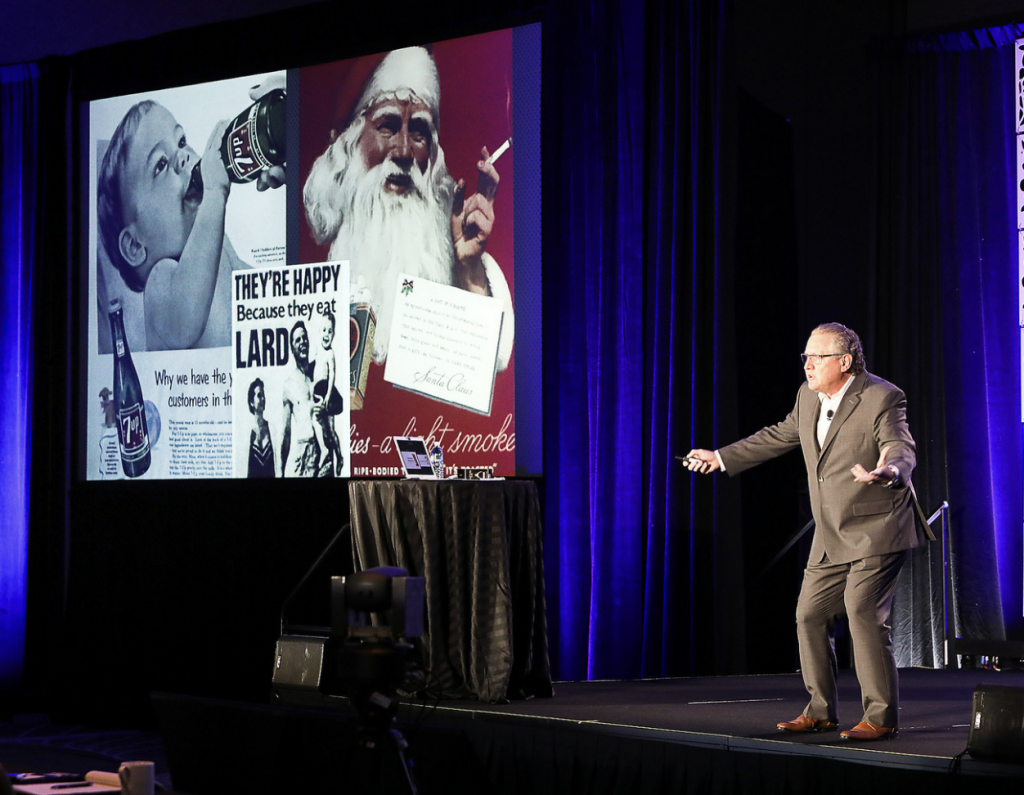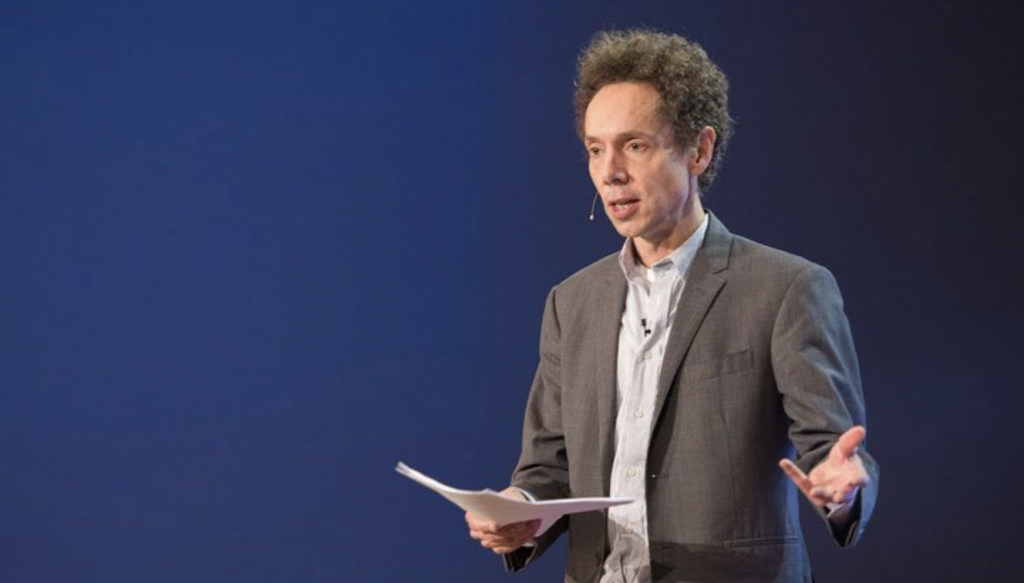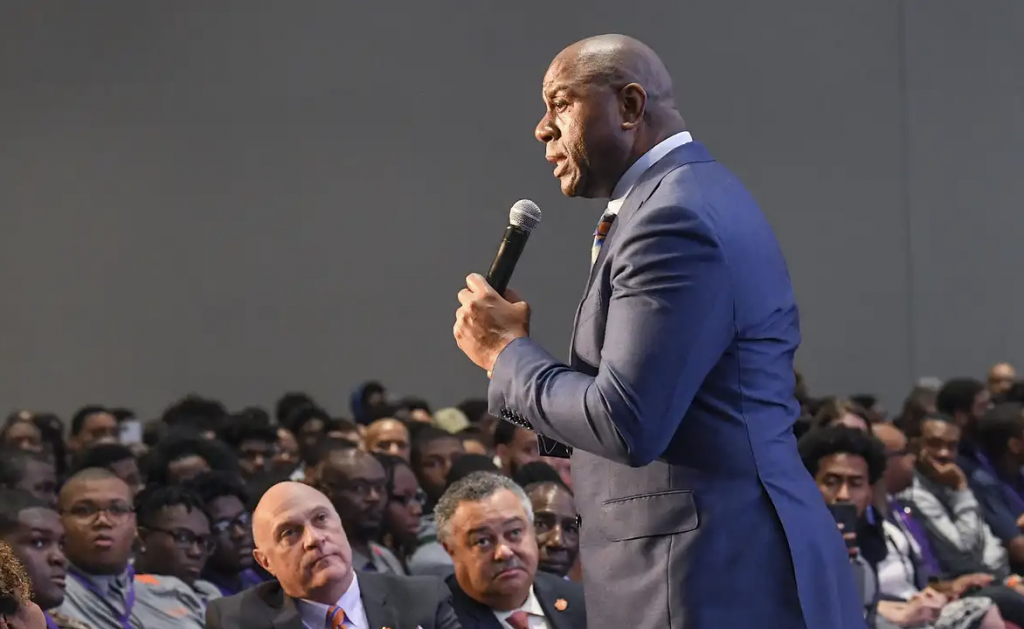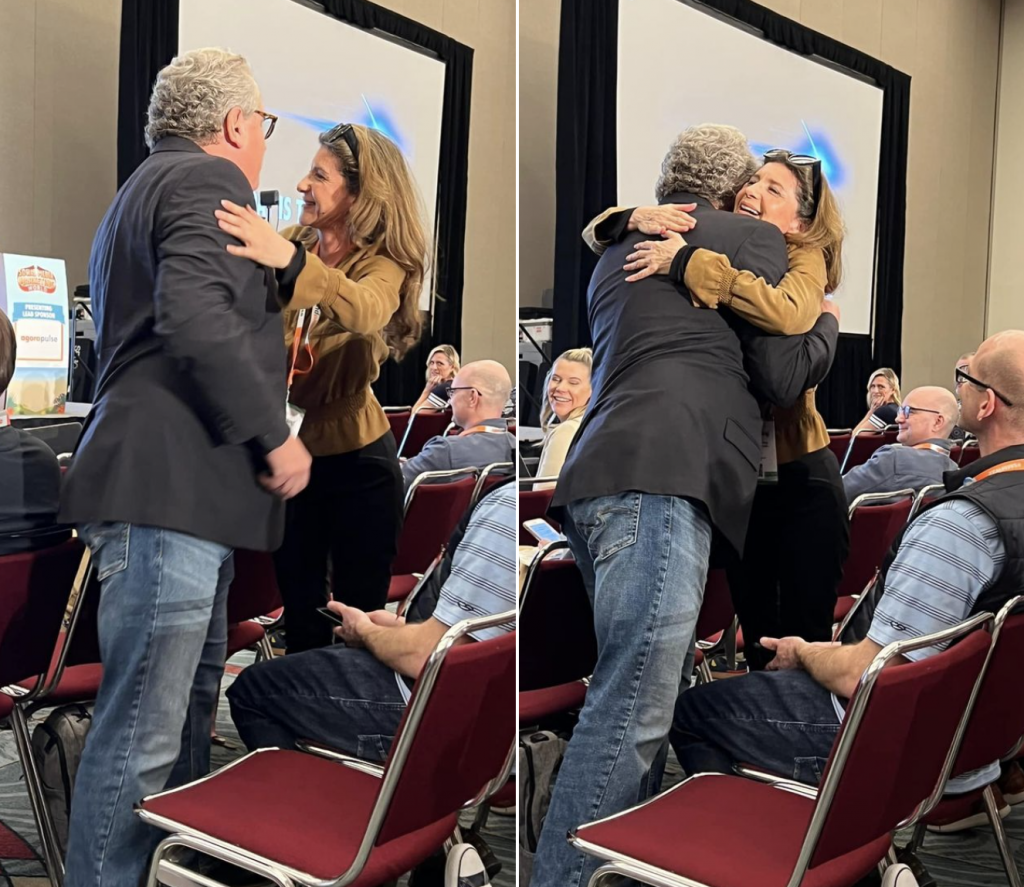
I was leading a coaching call the other day, helping a client craft their first keynote speech. I explained to him that there are many ways to deliver an effective talk and I thought this would make an interesting insight to provide to you today.
I’ve been on the professional speaking circuit for more than a decade and I’ve observed some of the best in the business. I’ve seen six different ways people can prepare and present a keynote speech.
It’s important to understand these different styles and how they might work for you …
What is a keynote speech?
First, let’s step back and describe how a “keynote speech” differs from other types of talks.
- The keynote speech normally sets the tone at the opening of an event or brings the event to an inspirational close.
- Greater importance is placed on the keynote speech because of the fame or accomplishments of the speaker. Typically the keynote speaker is promoted as a highlight of the event.
- Normally the keynote speaker is paid because of their status in the industry.
If you want to have a career as a speaker, your goal would be to become established and experienced enough to be known as a keynote speaker.
Let’s get into the six speaking options:
1. Extemporaneous
This involves little or no preparation. It ranges from a stream of consciousness to preparing a few notes right before the speaker is ready to go onstage. Often, this is described as “I’m just going to have a conversation with you right now.”
I have rarely seen anybody pull this off well. In fact, if I made a list of the Top Five WORST speeches I have ever seen, they are all somebody trying to wing their way through a speech with little or no preparation.
ADVANTAGE: No preparation time, total flexibility.
DISADVANTAGE: High risk that you come across as unprepared, and unprofessional. You might run under or over the allotted time of the speech if you’re just rambling. It can hurt your reputation if you fall flat because most organizers do NOT expect a keynote speech to be a conversation. They are hiring you to uniquely educate and inspire their audience.
2. Notes on the stage

Some professional speakers literally bring written notes up on a stage with them and refer to them throughout the talk.
I have seen a newbie speaker actually read their speech at a marketing conference. Another variation is “notes as a security blanket.” An example of this would be the famous author/podcaster/pundit Malcolm Gladwell. Malcolm will normally have a script in his hand as he gives his speech. He might lightly refer to it to make sure he is on track for his audience, but his speech is still rehearsed.
I might use this style for a one-time, casual presentation to a college class, but I’ve never used it for a professional keynote speech.
ADVANTAGE: Helps you get through the nerves and assures you are hitting every point. This might work in the case where every word is important, like in a national security crisis.
DISADVANTAGE: You’re probably NOT in a national security crisis and reading any part of your speech is a bad look. I have no problem with somebody referring to an outline, but reading a speech is narration, not public speaking. In general, don’t do it.
3. The story shuffle
Very experienced speakers know which stories ignite emotions in their audience. One technique is to keep a notecard deck of your best stories and then weave them into an appropriate speech for an audience.
A famous person who uses this technique is former U.S. President Bill Clinton, one of the highest-paid speakers in the world. On the way to a speech, he will think about his audience, pull out favorite stories from a deck of notated cards, and assemble them into a narrative for an audience.
I’ve also heard people call this method of assembling a keynote speech from various pieces as a “Frankenstein,” as in, “I had to put a speech together in a hurry, so I frankensteined it!”
ADVANTAGE: Very low preparation time. Takes advantage of previous content. Assures good audience response because you know what works.
DISADVANTAGE: You have to be an extraordinarily experienced and confident speaker to pull this off with a broad range of available stories. There is a risk that you come across as disconnected if the stories aren’t perfectly tuned to the theme of the event. Celebrities can get away with that because they are … celebrities!
4. Single purpose
This might be the most common style for brand-new speakers. They craft and rehearse a single-purpose speech, meant for one event.
For example, a friend of mine lamented that he created a highly-specific talk for Content Marketing World but found that it’s so narrowly focused he can’t use it again.
This is appropriate for high-stakes audiences when you have something to prove. An example of this would be a TED talk or an audience of high-potential clients.
ADVANTAGE: If you’re just starting out, a single-purpose speech lets you experiment and build your confidence because it’s likely to be very specific and effective. You’re putting everything you have into one moment. It allows you to be highly-specific and connected to the audience.
DISADVANTAGE: A rule of thumb is that it takes about 20 hours of preparation to create one hour of new content. Then, you have to add the rehearsal time … maybe another five or six more hours? So this is highly inefficient. It’s a lot of effort but the pay-off might be worth it depending on the circumstances.
5. The performance

One time I spoke at an event and followed former NBA great Magic Johnson. Magic is out giving his speech several times a week. The same speech. Word-for-word. He knows exactly when the crowd will laugh or gasp.
Magic has given this keynote speech so many times that it’s simply a memorized performance. And everybody knows it, but it’s OK because it’s mesmerizing just to SEE Magic Johnson!
ADVANTAGE: No preparation, no stress. You know it works. This style works when seeing a celebrity is more important than the message of the speech.
DISADVANTAGE: If you’re a celebrity-level speaker, there is probably no downside. If you’re a working-class speaker like me, there is a risk of being irrelevant if you keep telling the same stories in the same speech year after year. You’re inflexible. This helped kill the career of a friend of mine who gave the same speech for years and then found that it was irrelevant during the pandemic.
6. The Legacy Keynote Speech
This is a hybrid style used by almost every successful professional speaker I know.
 In this style, you have a number of different “performances” to call on. For lack of a better word, I will call them legacy speeches. These are your showcase themes.
In this style, you have a number of different “performances” to call on. For lack of a better word, I will call them legacy speeches. These are your showcase themes.
A masterful example of this is Ann Handley. Ann obsesses over her well-crafted and entertaining speeches. She rehearses every line and blocks every movement like a stage performance (which it is). Even her outfits are meant to captivate.
But Ann never gives the same keynote speech twice because she picks the right performance from her portfolio and artfully tailors it to the specific audience.
This is also the speaking strategy I use. As an example, I have several tried-and-true legacy speeches ready to go on:
- The power and promise of personal branding
- The future of marketing
- The most human company wins
- How to be relentlessly relevant
These speeches are battle-tested and can deliver a guaranteed knock-out performance.
But, like Ann, I never give the same keynote speech twice.
In the hybrid model, I alter my most popular speeches to include details that connect to an audience in a timely and intimate way. I might include:
- Comments about my personal connection to the event, profession, or place
- A link to something in the news that is relevant to the conference
- Pulling in a story from a different speech
- Specific case studies and stories relevant to the issues of the audience/industry
I have even been known to stop in the middle of a speech and connect to something going on with the audience. Earlier this year, I left the stage because somebody needed a hug. That was a first!

ADVANTAGE: You maximize impact/relevance and minimize work by customizing established speeches. Since these talks are well-rehearsed, crafted in detail, and tailored to an audience, this style will make a high impact.
DISADVANTAGE: Creating a powerful legacy speech is a grueling and demanding process. Writing, refining, and rehearsing a legacy performance might take weeks of work. But it is well worth it if you’re creating a performance that you can customize and monetize for years to come.
The ultimate keynote speech
Obviously, I’m a fan of the hybrid legacy speech. There are some significant advantages:
- Since you’re repeating a legacy speech, you’re more likely to have a video recording to show event organizers who might want to hire you
- You can show feedback and ratings from previous speeches.
- A distinctive speech can turbo-charge your personal brand
- A well-crafted speech can lead to other monetization efforts like consulting and book sales.
- You come across as confident because you’ve done this well-rehearsed speech before
- It’s more fun because by changing an established speech, it’s never boring to you or the audience
- You can hit your mark on the keynote speech timing ( 30 minutes, 45, etc.) because you’re so well-rehearsed
Finally, technically speaking, there is a seventh way you could deliver a keynote speech. You could do it virtually, but that’s a story for another day.
I hope this helps. I’ve done a lot of work over the years helping people nurture their speaking careers and craft blockbuster speeches. You can always reach out to me here if you need my help.
 Mark Schaefer is the executive director of Schaefer Marketing Solutions. He is the author of some of the world’s bestselling digital marketing books and is an acclaimed keynote speaker, college educator, and business consultant. The Marketing Companion podcast is among the top business podcasts in the world. Contact Mark to have him speak to your company event or conference soon.
Mark Schaefer is the executive director of Schaefer Marketing Solutions. He is the author of some of the world’s bestselling digital marketing books and is an acclaimed keynote speaker, college educator, and business consultant. The Marketing Companion podcast is among the top business podcasts in the world. Contact Mark to have him speak to your company event or conference soon.
Follow Mark on Twitter, LinkedIn, YouTube, and Instagram. Discover his $RISE creator community.
Illustration courtesy of Unsplash.com


